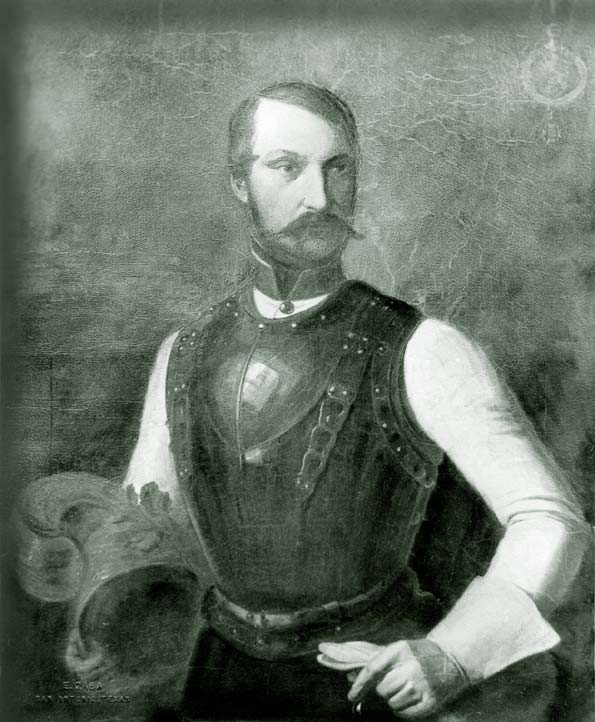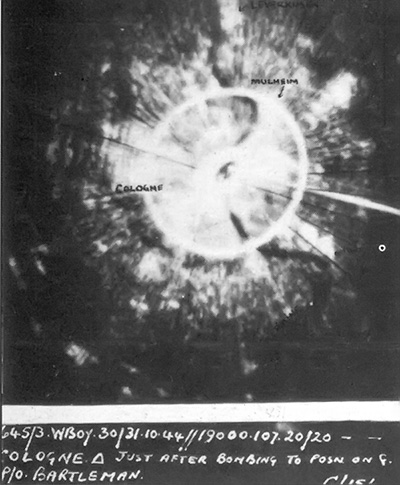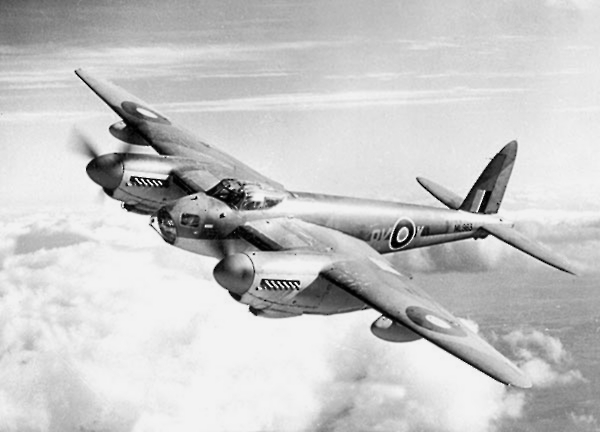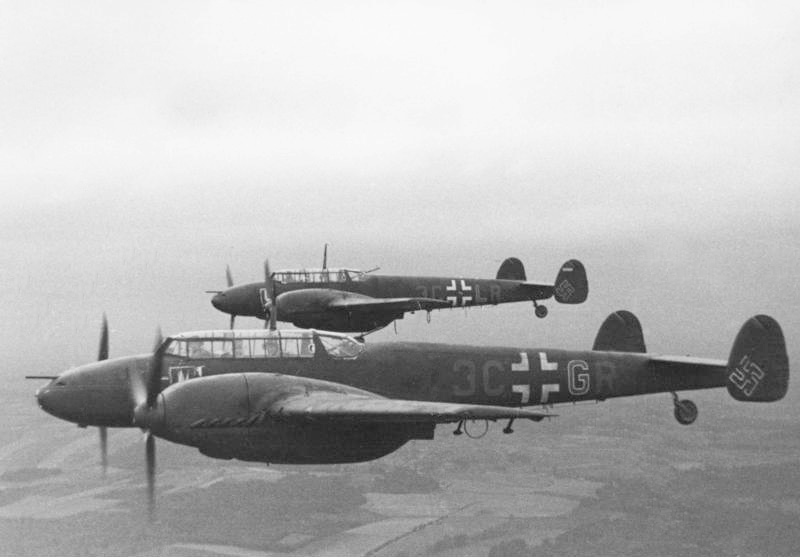|
Reinhold Knacke
Reinhold Knacke (1 January 1919 – 3 February 1943) was a German Luftwaffe military aviator during World War II, a night fighter ace credited with 44 aerial victories, plus one unconfirmed claim by day, achieved in approximately 160 combat missions making him one of the more successful night fighter pilots in the Luftwaffe.For a list of Luftwaffe night fighter aces see ''List of German World War II night fighter aces''. All of his victories were claimed over the Western Front in Defense of the Reich missions against Royal Air Force Bomber Command. Born in Strelitz, Knacke grew up in the Weimar Republic and Nazi Germany. He joined the Luftwaffe in 1937 and was trained as a pilot. He served with ''Zerstörergeschwader'' 1 (ZG 1—1st Destroyer Wing), flying a Messerschmitt Bf 110 heavy fighter, at the start of World War II. He claimed his first aerial victory during the Battle of France which was not confirmed. In June 1940, the Luftwaffe created its first night fighter w ... [...More Info...] [...Related Items...] OR: [Wikipedia] [Google] [Baidu] |
Neustrelitz
Neustrelitz (; East Low German: ''Niegenstrelitz'') is a town in the Mecklenburgische Seenplatte district in the state of Mecklenburg-Vorpommern, Germany. It is situated on the shore of the Zierker See in the Mecklenburg Lake District. From 1738 until 1918 it was the capital of the Duchy of Mecklenburg-Strelitz. From 1994 until 2011 it was the capital of the district of Mecklenburg-Strelitz. The name ''Strelitz'' is derived from the Polabian word ''Strelci'', meaning "archers" or "shooters".The related Polish form '' Strzelce'' is still a common toponym in Poland. History The village of Strelitz was first mentioned in 1278. It grew to a small town in the following centuries. In the 17th century Strelitz was a part of the duchy of Mecklenburg-Güstrow, which ceased to exist after the death of the last duke in 1695. Afterwards the new Duchy of Mecklenburg-Strelitz was established (1701). This small duchy contained the present-day district and an exclave around Ratzeburg, which i ... [...More Info...] [...Related Items...] OR: [Wikipedia] [Google] [Baidu] |
List Of German World War II Night Fighter Aces
A flying ace or fighter ace is a military aviator credited with shooting down five or more enemy aircraft during aerial combat. German day and night fighter pilots claimed roughly 70,000 aerial victories during World War II, 25,000 over British or American and 45,000 over Soviet flown aircraft. 103 German fighter pilots shot down more than 100 enemy aircraft for a total of roughly 15,400 aerial victories. Roughly a further 360 pilots claimed between 40 and 100 aerial victories for round about 21,000 victories. Another 500 fighter pilots claimed between 20 and 40 victories for a total of 15,000 victories. According to Obermeier, it is relatively certain, that 2,500 German fighter pilots attained ace status, having achieved at least 5 aerial victories. 453 German day and ''Zerstörer'' (destroyer) pilots received the Knight's Cross of the Iron Cross. 85 night fighter pilots, including 14 crew members, were awarded the Knight's Cross of the Iron Cross. The list is sorted by the numbe ... [...More Info...] [...Related Items...] OR: [Wikipedia] [Google] [Baidu] |
Airborne Ground Surveillance
Airborne ground surveillance (AGS) refers to a class of military airborne radar system ( Surveillance aircraft) used for detecting and tracking ground targets, such as vehicles and slow moving helicopters, as opposed to Airborne early warning and control, whose primary role is detecting and tracking aircraft in flight. Antenna beam width should be very small to enhance resolution. This antenna size limitation demands high frequency (GHz range) of operation, to be operated in this mode. AGS radar is typically a medium or low power radar. It includes both maritime and land surveillance. Today, UAVs perform this operation, which often uses optical aids for surveillance. Aircraft * US Air Force Northrop Grumman E-8 Joint STARS * US Navy Boeing P-8 Poseidon * Russian Air Force Tupolev Tu-204R * British Royal Air Force Raytheon Sentinel * US Air Force Northrop Grumman RQ-4 Global Hawk * Tethered Aerostat Radar System * JLENS See also * Intelligence, surveillance, target acquisit ... [...More Info...] [...Related Items...] OR: [Wikipedia] [Google] [Baidu] |
Airborne Radar System
Airborne or Airborn may refer to: Arts, entertainment, and media Films * ''Airborne'' (1962 film), a 1962 American film directed by James Landis * ''Airborne'' (1993 film), a comedy–drama film * ''Airborne'' (1998 film), an action film starring Steve Guttenberg Steven Robert Guttenberg (born August 24, 1958) is an American actor, author, businessman, producer, and director. He is known for his lead roles in Hollywood films of the 1980s and 1990s, including ''Cocoon'', ''Police Academy'', ''Three Men and ... * Airborne (2012 film), ''Airborne'' (2012 film), a horror film Games * ''Airborne!'', a 1985 computer game by Silicon Beach Software * ''Airborne Ranger'', a 1987 computer game by Microprose * ''Asphalt 8: Airborne'', a 2013 video game * ''Medal of Honor: Airborne'', a 2007 video game Literature *Airborn (novel), ''Airborn'' (novel), a 2004 young adult novel by Kenneth Oppel *''Airborn'' (''Hijos del aire''), a poetry collection by Octavio Paz, English translation C ... [...More Info...] [...Related Items...] OR: [Wikipedia] [Google] [Baidu] |
H2S (radar)
H2S was the first airborne, ground scanning radar system. It was developed for the Royal Air Force's Bomber Command during World War II to identify targets on the ground for night and all-weather bombing. This allowed attacks outside the range of the various radio navigation aids like Gee or Oboe, which were limited to about . It was also widely used as a general navigation system, allowing landmarks to be identified at long range. In March 1941, experiments with an early airborne interception radar based on the 9.1 cm wavelength, (3 GHz) cavity magnetron revealed that different objects have very different radar signatures; water, open land and built-up areas of cities and towns all produced distinct returns. In January 1942, a new team was set up to combine the magnetron with a new scanning antenna and plan-position indicator display. The prototype's first use in April confirmed that a map of the area below the aircraft could be produced using radar. The first systems ... [...More Info...] [...Related Items...] OR: [Wikipedia] [Google] [Baidu] |
Knight's Cross Of The Iron Cross
The Knight's Cross of the Iron Cross (german: Ritterkreuz des Eisernen Kreuzes), or simply the Knight's Cross (), and its variants, were the highest awards in the military and paramilitary forces of Nazi Germany during World War II. The Knight's Cross was awarded for a wide range of reasons and across all ranks, from a senior commander for skilled leadership of his troops in battle to a low-ranking soldier for a single act of military valour. Presentations were made to members of the three military branches of the : the (army), the (navy) and the (air force), as well as the , the Reich Labour Service and the (German People storm militia), along with personnel from other Axis powers. The award was instituted on 1 September 1939, at the onset of the German invasion of Poland. The award was created to replace the many older merit and bravery neck awards of the German Empire. A higher grade, the Oak Leaves to the Knight's Cross, was instituted in 1940. In 1941, two higher grades ... [...More Info...] [...Related Items...] OR: [Wikipedia] [Google] [Baidu] |
Organization Of The Luftwaffe (1933–1945)
Between 1933 and 1945, the organization of the Luftwaffe underwent several changes. Originally, the German military high command, for their air warfare forces, decided to use an organizational structure similar to the army and navy, treating the aviation branch as a strategic weapon of war. Later on, during the period of rapid rearmament, the Luftwaffe was organized more in a geographical fashion. Under the terms of the Treaty of Versailles (1919), Germany was prohibited from having an air force, with the former German Empire's ''Luftstreitkräfte'' disbandment in 1920. German pilots were secretly trained for military aviation, first in the Soviet Union during the late 1920s, and then in Germany in the early 1930s. In Germany, the training was done under the guise of the German Air Sports Association (german: Deutscher Luftsportverband (DLV)) at the Central Commercial Pilots School (german: Zentrale der Verkehrs Fliegerschule (ZVF)). Following its 15 May 1933 formation in secret, ... [...More Info...] [...Related Items...] OR: [Wikipedia] [Google] [Baidu] |
Heavy Fighter
A heavy fighter is a historic category of fighter aircraft produced in the 1930s and 1940s, designed to carry heavier weapons, and/or operate at longer ranges than light fighter aircraft. To achieve performance, most heavy fighters were twin-engine, and many had multi-place crews; This was in contrast to light fighters, which were typically single-engine and single-crew aircraft. In Germany, they were known as ''Zerstörer'' ("destroyer"). The heavy fighter was a major design class during the pre-World War II period, conceived as long-range escort fighters or heavily-armed bomber destroyers. Most such designs failed in this mission, as they could not maneuver with the more conventional, single-engine fighters, and suffered heavy losses. Most notable among such designs was the Messerschmitt Bf 110, which suffered great losses during the Battle of Britain. An exception was the American Lockheed P-38 Lightning, which proved an effective heavy fighter; even against smaller, lighter, ... [...More Info...] [...Related Items...] OR: [Wikipedia] [Google] [Baidu] |
Messerschmitt Bf 110
The Messerschmitt Bf 110, often known unofficially as the Me 110,Because it was built before ''Bayerische Flugzeugwerke'' became Messerschmitt AG in July 1938, the Bf 110 was never officially given the designation Me 110. is a twin-engine (Destroyer, heavy fighter), fighter-bomber (''Jagdbomber'' or ''Jabo''), and night fighter (''Nachtjäger'') developed in Nazi Germany in the 1930s and used by the Luftwaffe during World War II. Hermann Göring was a proponent of the Bf 110, believing its heavy armament, speed, and range would make the Bf 110 the Luftwaffe’s premier offensive fighter. Early variants were armed with two MG FF 20 mm cannon, four 7.92 mm (.312 in) MG 17 machine guns, and one 7.92 mm (.312 in) MG 15 machine gun for defence (later variants would replace the MG FFs with MG 151s and the rear gunner station would be armed with the twin-barreled MG 81Z). Development work on an improved type to replace the Bf 110 - the Messerschmitt Me 210 - began be ... [...More Info...] [...Related Items...] OR: [Wikipedia] [Google] [Baidu] |
Zerstörergeschwader 1
''Zerstörergeschwader'' 1 (ZG 1—1st Destroyer Wing) (lit. ''destroyer wing'') was a Luftwaffe heavy/destroyer Fighter Aircraft-wing of World War II. Formation ''Zerstörergeschwader'' 1 (ZG 1—1st Destroyer Wing) was formed with two ''Gruppen'' (groups) before the war. Initially, no '' Geschwaderstab'' (headquarters unit) nor III. ''Gruppe'' (3rd group) was formed. I. ''Gruppe'' (1st group) was formed by renaming II(s). ''Gruppe'' (2nd group) of ''Jagdgeschwader'' 132 "Richthofen" (JG 132—132nd Fighter Wing) to I. ''Gruppe'' of ''Zerstörergeschwader'' 141 (ZG 141—141st Destroyer Wing) on 1 November 1938 flying the Messerschmitt Bf 109 single engine fighter. On 1 May 1939, I. ''Gruppe'' of ZG 141 became I. ''Gruppe'' of ZG 1. During this entire time, the ''Gruppe'' was commanded by ''Major'' Joachim-Friedrich Huth. This unit was initially based at Jüterbog- Damm until it was moved to Mackfitz, present-day Makowice in north-western Poland ... [...More Info...] [...Related Items...] OR: [Wikipedia] [Google] [Baidu] |
Nazi Germany
Nazi Germany (lit. "National Socialist State"), ' (lit. "Nazi State") for short; also ' (lit. "National Socialist Germany") (officially known as the German Reich from 1933 until 1943, and the Greater German Reich from 1943 to 1945) was the German state between 1933 and 1945, when Adolf Hitler and the Nazi Party controlled the country, transforming it into a dictatorship. Under Hitler's rule, Germany quickly became a totalitarian state where nearly all aspects of life were controlled by the government. The Third Reich, meaning "Third Realm" or "Third Empire", alluded to the Nazi claim that Nazi Germany was the successor to the earlier Holy Roman Empire (800–1806) and German Empire (1871–1918). The Third Reich, which Hitler and the Nazis referred to as the Thousand-Year Reich, ended in May 1945 after just 12 years when the Allies defeated Germany, ending World War II in Europe. On 30 January 1933, Hitler was appointed chancellor of Germany, the head of gove ... [...More Info...] [...Related Items...] OR: [Wikipedia] [Google] [Baidu] |
Weimar Republic
The Weimar Republic (german: link=no, Weimarer Republik ), officially named the German Reich, was the government of Germany from 1918 to 1933, during which it was a constitutional federal republic for the first time in history; hence it is also referred to, and unofficially proclaimed itself, as the German Republic (german: Deutsche Republik, link=no, label=none). The state's informal name is derived from the city of Weimar, which hosted the constituent assembly that established its government. In English, the republic was usually simply called "Germany", with "Weimar Republic" (a term introduced by Adolf Hitler in 1929) not commonly used until the 1930s. Following the devastation of the First World War (1914–1918), Germany was exhausted and sued for peace in desperate circumstances. Awareness of imminent defeat sparked a revolution, the abdication of Kaiser Wilhelm II, formal surrender to the Allies, and the proclamation of the Weimar Republic on 9 November 1918. In its i ... [...More Info...] [...Related Items...] OR: [Wikipedia] [Google] [Baidu] |









